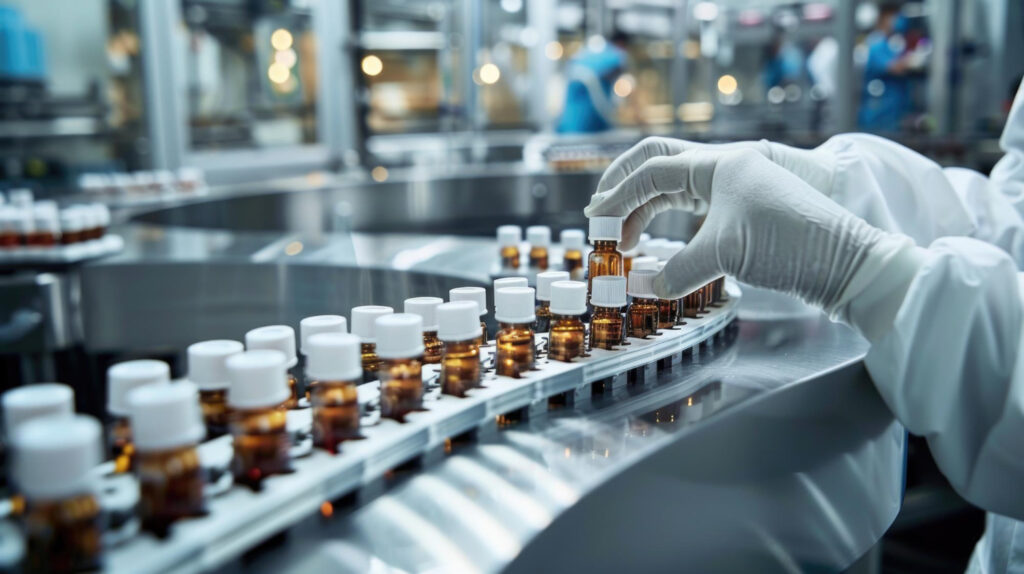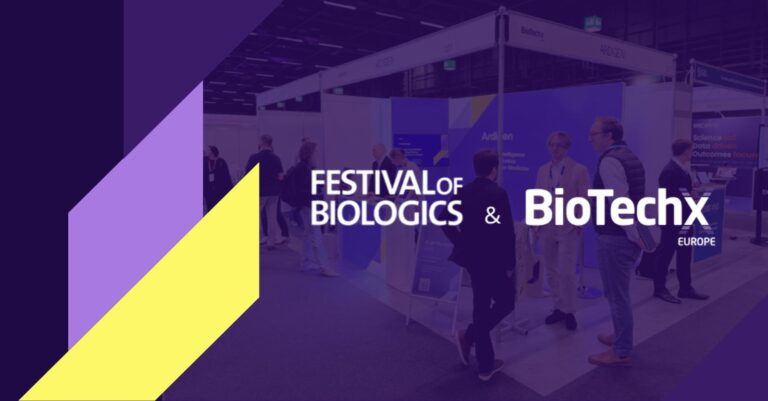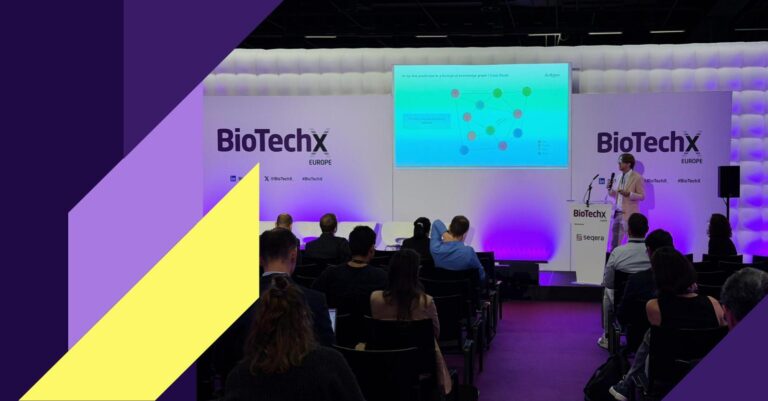Europe’s biopharma industry is at a pivotal moment. Driven by ambitious public-private partnerships, regulatory reforms, and the AI revolution, drug discovery in Europe is evolving fast to meet the needs of patients and markets worldwide. How will this transformation shape the next generation of therapies and what role will innovators like Ardigen play? Here’s what to watch.
Public-private partnerships fueling European Biopharma innovation
A central trend in European drug discovery is the shift toward coordinated public-private investment. Inspired by the EU Chips Act, the proposed Biotech for Europe initiative aims to build scalable biotech capacity through pooled funding and strategic collaboration.
In early 2024 alone, over €5 billion in venture capital was poured into European biotech, with substantial government support from France’s €7 billion innovation fund, Germany’s Zukunftsfonds, and EU-level mechanisms such as the European Investment Bank and Horizon Europe grants.
These public-private partnerships in biotech do more than provide capital. They de-risk early-stage R&D, accelerate clinical development, and strengthen manufacturing capacity for advanced therapies and precision medicine.
IPO (Initial Public Offering) activity has surged, with notable European biotech companies raising substantial capital; however, many still prefer Nasdaq for its deeper capital pools. Mergers and acquisition activity is expected to increase in 2025 as larger pharmaceutical companies seek to diversify their portfolios by acquiring innovative smaller biotech firms.
Europe is also exploring joint undertakings in food biotech and biomanufacturing, aligning with broader EU strategies.

source: https://oxfordglobal.com/
Regulatory changes: faster, smarter access
Alongside funding reforms, Europe is modernizing its regulatory environment. Since January 2025, the new EU Health Technology Assessment (HTA) Regulation mandates joint clinical assessments (JCAs), joint scientific consultations, and horizon scanning for new medicines across Member States. This replaces the patchwork of voluntary efforts with a streamlined, transparent framework that aligns HTA timelines with EMA approvals, reducing duplication and cutting the time it takes innovative therapies to reach patients.
The HTA approach evaluates new medical technologies to assess their effectiveness in comparison to existing ones. It asks: is this new option better, just as good, or not as effective? HTA helps governments and healthcare systems determine which treatments deliver the most value for patients. By weighing medical results alongside social, economic, and ethical considerations, it guides decisions about which healthcare innovations should receive approval and be prioritized.
The regulation puts emphasis on transparency and stakeholder engagement, with public summaries and increased input from patients, clinicians, and industry. Currently, it covers new medicines and particular high-risk devices. But its scope will expand to cover orphan medicines by 2028 and all new medicinal products by 2030, providing a predictable path to market while respecting national pricing decisions.
Meanwhile, the forthcoming European Biotech Act (expected proposal in late 2026) promises more streamlined clinical trial frameworks for advanced therapies, without compromising safety or biosecurity.
Maturing hubs and emerging clusters
Europe’s biotech landscape is diverse, with clear gradients of maturity. Basel remains Europe’s premier life sciences cluster, home to pharma giants, dense biotech networks, and advanced clinical trial infrastructure.
Basel hosts around 800 companies and 28,000 employees spanning the entire value chain from R&D to production and marketing. It benefits from the presence of global pharma companies Roche and Novartis, alongside a dense network of innovative biotech firms, such as Actelion and Basilea.
The region excels in clinical trial activity, patent output, and pipeline assets per capita, supported by strong academia-industry collaboration and strategic investment. Basel continues to attract new companies, evidenced by major recent financings and the establishment of the Botnar Institute of Immune Engineering, backed by a $1 billion donation.
Flanders in Belgium is leveraging strong government support and international events, such as Bio-Equity Europe and the annual Flanders Life Sciences Year, to boost its reputation as a leading biopharma hub.
Barcelona, hosting BIOSPAIN in 2025 and 2027, quickly becomes Southern Europe’s biotech capital with a focus on public-private coordination and sectoral diversity. The city’s biotech ecosystem, led by the BioRegion of Catalonia, is the largest in Spain by company count and turnover, attracting international investment and fostering innovation in health, agri-food, and sustainability sectors.
Other regions, including the Rhine-Main-Neckar area in Germany and the Netherlands, as well as new players in the Netherlands and Sweden, are investing in niche modalities such as diagnostics and personalized medicine. While the UK, France, and Germany still account for half of European biotech activity, these new clusters signal that drug discovery in Europe is increasingly dynamic, specialized, and collaborative.
Element biosciences & the ‘Too Good To Be True’ device
Element Biosciences drew significant attention with a showcase of their device that promise high temporal resolution, 45-minute sample preparation, and 24-hour turnaround. It clearly reflects the growing demand for integrated, multimodal platforms that go beyond traditional assay capabilities. While some attendees (ourselves included) viewed it with cautious curiosity, it was a clear discussion starter as their booth was really crowded just after the session.
Connecting the discovery pipeline
One recent merger that drew attention at the event was Certara’s acquisition of Chemaxon that were present together. It was not just for the deal itself, but for what it signals.
- Chemaxon brings expertise in early-stage discovery: compound design, ELNs, data workflows.
- Certara, known for its QSP modeling and translational services, owns the later-stage pharmacological intelligence layer.
What they’re building together is more than a platform. It’s a continuum , a connected pipeline from molecule ideation to clinical modeling, delivered through a blend of software and services.
This hybrid approach echoes a question many at the conference were asking : What does an end-to-end, AI-enabled discovery experience really look like?
For us at Ardigen, it reinforced something we’ve long believed: future-ready R&D doesn’t hinge on monoliths. It’s about modular capabilities, strong integration points, and teams who can move fluidly between data, models, and biology. Whether it’s in biologics, small molecules, or phenotypic screening, that’s the model we’re helping build.
What this all means for the future of drug discovery
Region | Status | Strengths | Notable Features |
|---|---|---|---|
Basel (Switzerland) | Mature Hub | Pharma giants, dense biotech cluster, clinical trials, patents | Botnar Institute, a strong innovation ecosystem0 |
Flanders (Belgium) | Mature Hub | Innovation promotion, biotech events, and government support | Bio-Equity Europe, Flanders Life Sciences Year |
Barcelona (Spain) | Mature Hub | Largest Spanish biotech cluster, international investment | BIOSPAIN 2025 & 2027, strong public-private coordination |
Rhine-Main-Neckar (Germany) | Mature Hub | Dense biotech and pharma cluster, academic integration | Strong in Heidelberg, Berlin-Brandenburg |
UK, France, Germany | Leading Countries | High startup activity, diverse modalities | UK leads in startups; France & Germany demonstrate substantial growth |
Netherlands, Sweden | Emerging | Focus on diagnostics, personalized care, and drug discovery | Growing biotech startup activity |
Other European regions | Developing | Fragmented growth, niche specializations | Varied innovation pace and sector focus |
Table 1. Biotech ecosystem maturity in Europe (2025).
It seems that strong academia-industry partnerships, accessible capital, and coordinated government support are consistent features of the most successful hubs.
Spotlight on France: growing biotech and AI powerhouse
France is also emerging as a standout hub in Europe’s biotech and AI landscape. While it is often described as a steady player, recent dynamics suggest it deserves closer attention.
The country is making significant investments in life sciences through initiatives like France Health Innovation 2030 – a €54 billion investment plan with substantial funding for bioproduction, oncology, cardiology, immunoinflammation, neuroscience, gene therapy, and AI-enabled health innovation (fields that the country leads in).
Paris, home to giants such as Sanofi, Servier, and Ipsen, is one of Europe’s largest biotech clusters, boasting over 1,400 life sciences companies and a dense concentration of R&D facilities, universities, and hospitals. Over the last three years, healthcare companies only in this region have raised more than €4 billion for their initiatives and attracted more foreign investors. However, France overall has a rich network of biotech hubs (Lyon, Strasbourg, Nantes, and Toulouse), each specialized in a specific field.
Beyond its pharmaceutical heritage, France is rapidly positioning itself as a leading AI hub, with over $1.3 billion invested in AI startups in 2024 alone. Companies like Owkin and its Bioptimus project exemplify how AI is transforming drug discovery, from real-world evidence generation to molecular modeling.
This AI momentum is backed by major government commitments (over €2 billion earmarked for AI development) and a vibrant ecosystem of talent, investors, and incubators centered in Paris but spreading to other regions.
Ardigen’s role in Europe’s Biopharma ecosystem
Ardigen is proud to be at the forefront of this transformation. As an AI-native CRO, we specialize in AI-powered drug discovery that integrates multiomic data, phenotypic screening results, and clinical insights into robust, scalable models. Our AI-ready pipelines support target identification, elucidation of the mechanism of action, and patient stratification, helping partners de-risk programs and accelerate timelines.
We maintain a strong presence at key European industry events, such as BIO-Europe and BioTechX, where we collaborate with pharmaceutical and biotechnology leaders, investors, and academic partners.
Ardigen also benefits from EU-backed initiatives such as the ProBio Małopolska project, which supports cross-border collaboration and regional innovation ecosystems. Our work aligns with UK genomic databank initiatives by enabling scalable, longitudinal analyses that make precision medicine a reality.
By combining proprietary AI methods with public and private datasets, Ardigen helps clients navigate the complexities of drug discovery. We established trusted collaborations with major pharma companies such as Boehringer Ingelheim and Alchemab, underscoring our role as a key CRO partner in Europe’s biotech innovation ecosystem. Our mission is clear: to make next-generation drug discovery not only possible, but also practical.
Why this matters now
Europe’s biopharma sector evolves into a globally competitive ecosystem. With coordinated public-private investment, novel regulations, and the maturation of biotech hubs, we are better prepared to deliver groundbreaking therapies. But success will depend on the industry’s ability to integrate data at scale, foster transparent partnerships, and maintain rigorous evidence standards.
For researchers, developers, and policymakers, the opportunity is significant – but so is the challenge. The future of drug discovery in Europe will require faster, smarter, and more collaborative approaches that prioritize patient outcomes. At Ardigen, we’re committed to driving that vision forward by partnering across Europe to advance AI-driven, data-enabled, and truly patient-centered drug discovery.
Author: Martyna Piotrowska |
Technical editing: Ardigen expert Jan Majta




